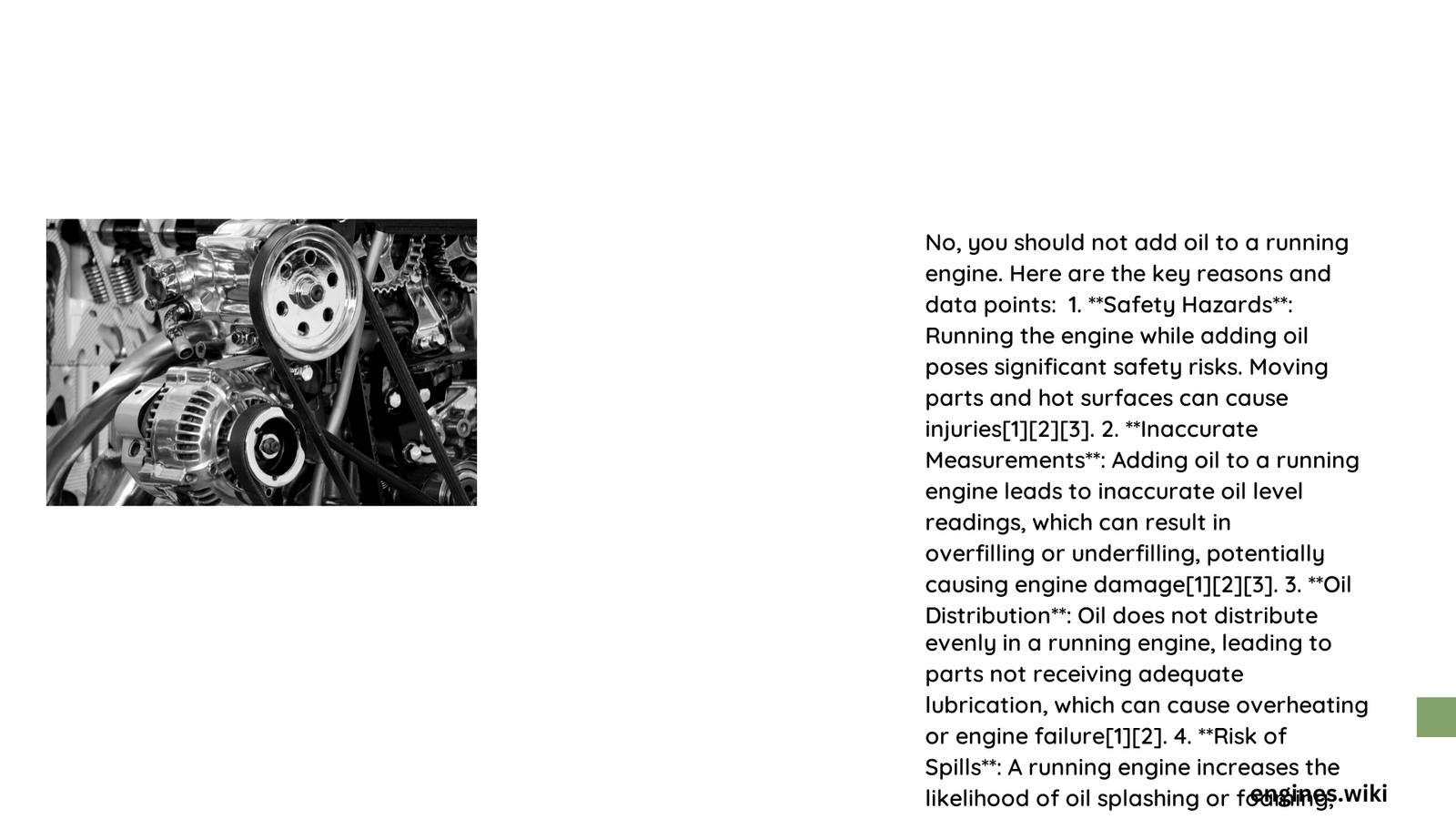Adding oil to a running engine is a dangerous practice that can lead to significant mechanical damage and personal injury. Vehicle owners must understand the critical risks associated with attempting to refill engine oil while the engine is operational. Improper oil management can cause catastrophic engine failures, uneven lubrication, and potential safety hazards that could result in expensive repairs or complete engine replacement.
What Happens When You Add Oil to a Running Engine?
Are There Immediate Safety Risks?
Adding oil to a running engine presents multiple immediate safety risks:
- Physical Injury Potential
- Moving engine components create high-speed rotation
- Risk of hand or clothing getting caught in moving parts
- Potential for unexpected splashing of hot oil
Can Oil Circulation Be Compromised?
When oil is added to a running engine, several critical circulation issues emerge:
| Problem | Potential Consequence |
|---|---|
| Uneven Oil Distribution | Inadequate lubrication of engine components |
| Oil Aeration | Reduced lubricating effectiveness |
| Pressure Fluctuations | Potential seal and gasket damage |
Why Does Oil Foaming Occur?
Oil foaming happens due to the crankshaft’s rapid movement, which whips the newly added oil into a frothy state. This creates:
- Reduced lubrication efficiency
- Increased engine wear
- Potential overheating of critical components
What Are the Long-Term Engine Damage Risks?
Continuous practice of adding oil to a running engine can lead to:
- Accelerated engine component wear
- Potential bearing and cylinder wall damage
- Increased risk of catastrophic engine failure
- Voiding of manufacturer’s warranty
Correct Procedure for Oil Maintenance

How Should Oil Be Added Safely?
Step-by-Step Safe Oil Addition:
- Park Vehicle on Level Ground
- Ensure car is stationary
-
Engage parking brake
-
Cool Down Engine
- Wait 15-30 minutes after stopping
-
Allow engine temperature to normalize
-
Check Oil Level
- Use dipstick for accurate measurement
-
Wipe dipstick clean before rechecking
-
Add Oil Carefully
- Use funnel to prevent spills
- Add oil slowly
- Check level incrementally
What Tools Are Recommended?
Essential tools for safe oil maintenance:
– Clean funnel
– Correct grade of engine oil
– Clean rags
– Gloves
– Jack and jack stands (if needed)
Expert Recommendations
When Should Professional Help Be Sought?
Consider professional assistance if:
– Unsure about oil change procedure
– Experiencing unusual engine sounds
– Notice persistent oil leaks
– Lack proper maintenance tools
Final Recommendations
Absolute Guidelines:
– Never add oil to a running engine
– Always allow engine to cool
– Use manufacturer-recommended oil
– Maintain regular service intervals
Reference:
– SAE International Oil Specifications
– Automotive Maintenance Guidelines
– Engine Lubrication Research
